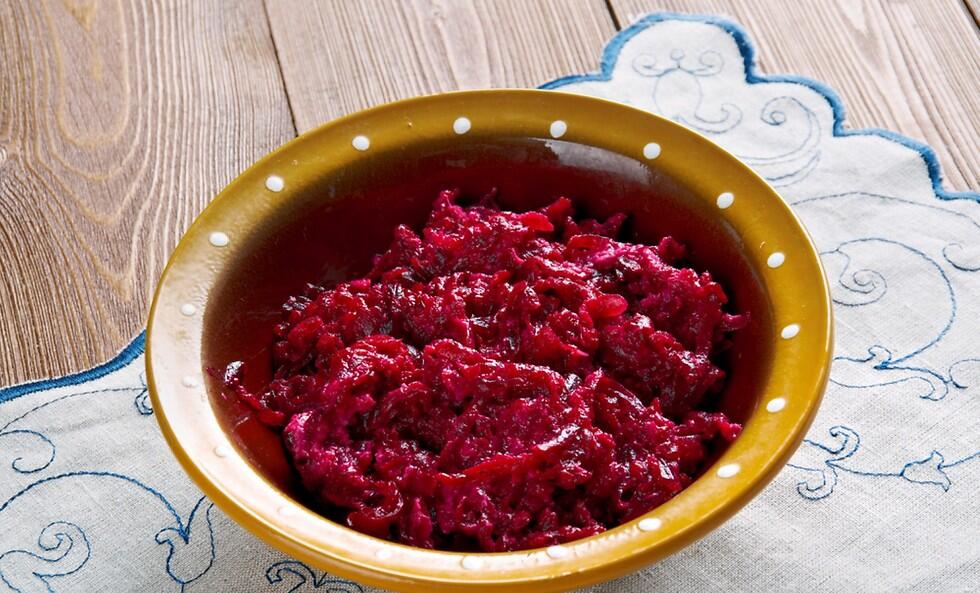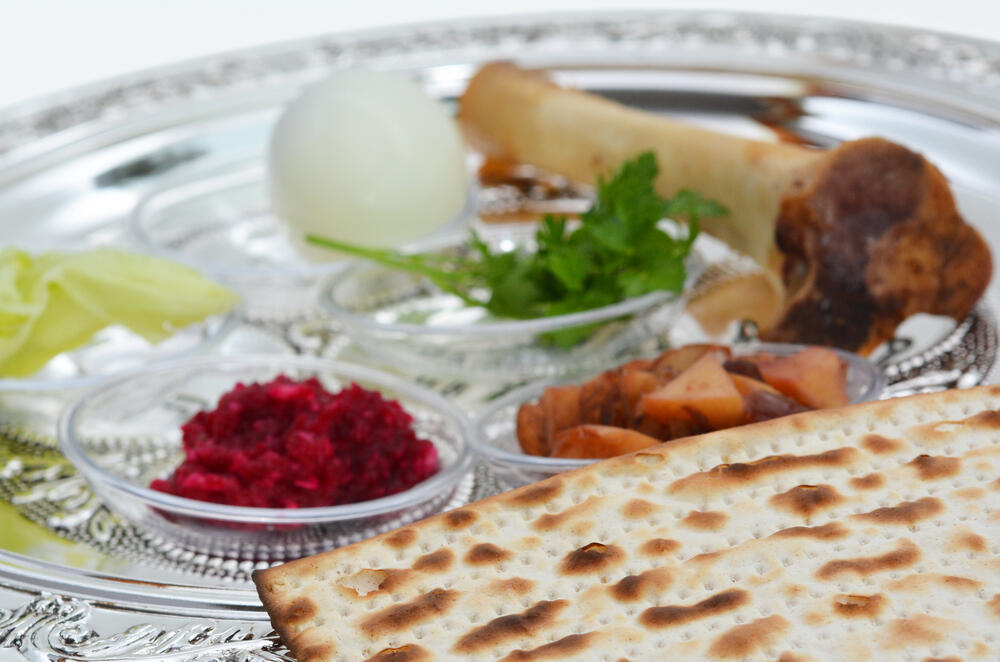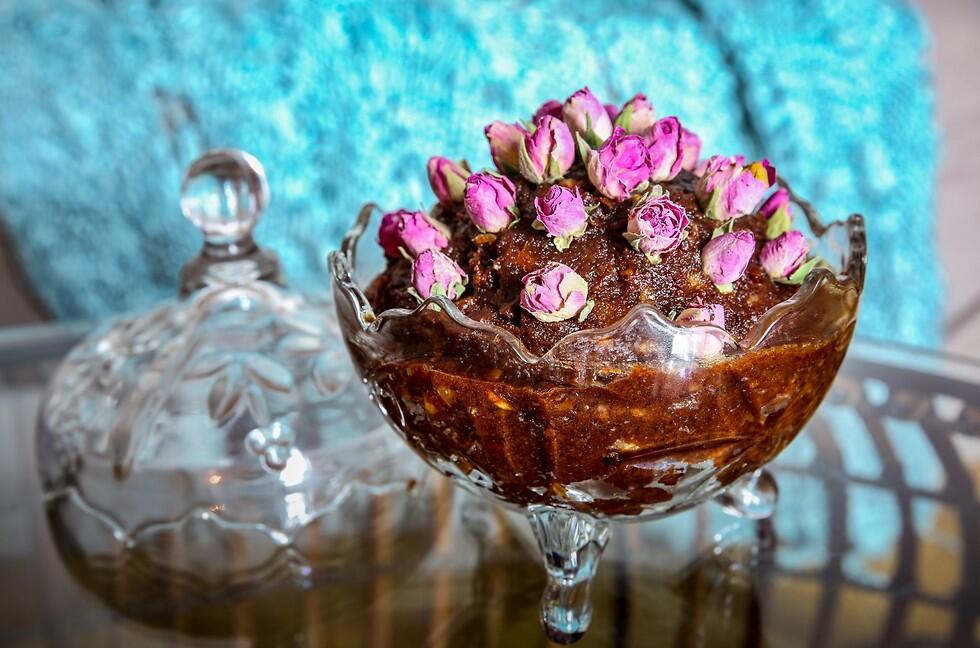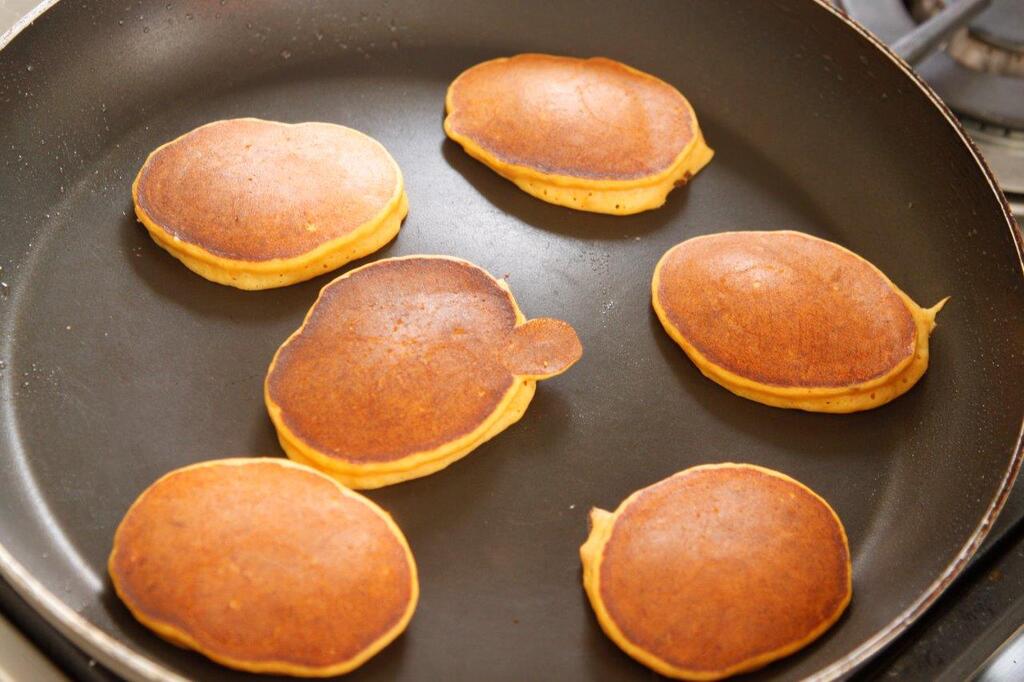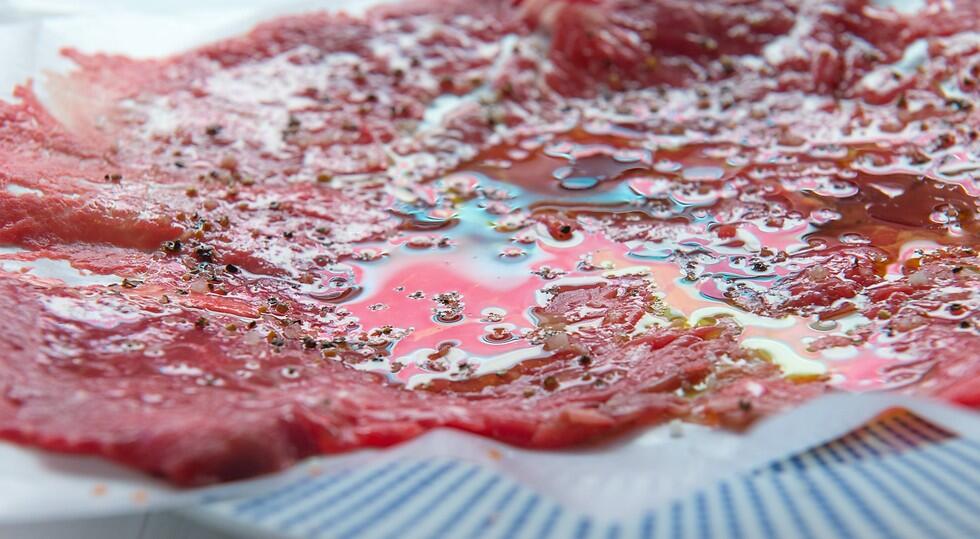Getting your Trinity Audio player ready...
On the eve of the Passover Seder, just before we begin the feast, it is customary to bless the traditional Seder plate that contains all the symbolic food items associated with the Jewish holiday.
The plate usually contains: Maror - Bitter herbs, Chazeret - typically romaine lettuce, whose roots are bitter-tasting, Charoset - a sweet, brown, pebbly paste of fruits and nuts, Karpas - a vegetable other than bitter herbs, usually parsley but sometimes something such as celery or cooked potato, Zeroa (shank bone) - a roasted lamb or goat bone, and a roasted hard-boiled egg.
To make your Passover preparations a little easier, Ynet has compiled a dedicated guide that contains everything you need in order to make you ritual feast a successful one, including special recipes - with a twist for those who want to add some innovations to the holiday table.
Maror
The Maror symbolizes the bitterness of the years of slavery, which the Jews had to endure in Ancient Egypt. It is usually lettuce or bitter leaves, next to the chazeret - symbolic bitter herb eaten at Passover - mixed with beets. Instead of the lettuce leaves, you can make a fresh lettuce salad, which will be used for both the blessings and as a first course, or any other fresh green salad you choose.
Classic Chazeret recipe
Ingredients
Some 150-200 grams of chazeret roots
Freshly squeezed lemon juice
1/2 teaspoon of salt
1 teaspoon of sugar
For spicy chazeret:
Some 150-200 grams of chazeret roots
2 medium-sized beets cooked in their bark
1/2 teaspoon of salt
1 tablespoon of sugar
1/4 cup of simple vinegar
Instructions:
1. Peel and scrape the chazeret roots
2. For purple chazeret, peel the beets and scrape them too. Filter excess fluid.
3. Mix it all up and store it in the fridge, in a well-sealed box. An hour later, take it out, taste and spice it accordingly.
Karpas
Karpas is a vegetable that is traditionally eaten at the beginning of the Seder. If during a regular Friday dinner in the Jewish tradition you start with bread, eating a vegetable first during on Passover eve is intended to stimulate curiosity among the children around the table, encouraging them to ask questions. When everyone finishes eating the karpas, the reading of Mah Nishtanah (The Four Questions) begins and the re-telling of the The Book of Exodus.
You can put celery stems on the table or potato chips, and they can be used for blessing. But you can also do so with a twist and put the celery in a refreshing herb salad, you can also convert the celery into a cast-out, seasoned asparagus stem, or just be creative.
Celery salad
Ingredients
500 grams of large celery roots (weight without stems)
Freshly squeezed lemon juice
2 teaspoons of mustard
2-3 tablespoons of mayonnaise
Salt and pepper
For the sauce
1/2 cup of olive oil
2 tablespoons of wine vinegar or lemon juice
1 teaspoon of mustard
Salt and pepper
Instructions:
1. Peel and slice the celery into thin slices and then into thinner slices (You can also tow to thin strips in a food processor).
2. Soak the strips for about an hour in a bowl of water seasoned with lemon juice. Drain well.
3. Prepare the vinaigrette sauce and put all the ingredients in a jar and shake well.
4. Add to the filtered celery strips. Stir.
5. Before serving, mix the mayonnaise with mustard and add to the salad.
Charoset
Representing the mortar used by the Jewish slaves to build the storehouses of Egypt. You are supposed to dip the maror in it. Every ethnic group has its own charoset, and every family has its own version that they love: The Eastern European charoset usually consists of apples, nuts, red wine, and various spices. While the Mizrahi Jews (Oriental Jews) add date palms and nuts.
Classic charoset
Ingredients
10 large pitted date palms
1 apple, carved into quarters without the core
100 grams of walnuts
50 grams of hazelnuts
1/4 cup of sweet wine
4 tablespoons of date honey
pinch of cinnamon
pinch of carnation
Instructions:
1. Put all the ingredients into a food processor and grind them into a unified texture.
2. Move to the bowl and serve.
Matza
You can put three matzot in the middle of the table, you can even soak them in the water a little bit. But you can also get creative and make a delicious first course with matzot: Try and go with a pathos salad and replace the pieces of bread with matza. You can also make an extra effort and make some fancy, festive matza pancakes.
Salty matza pancakes with caramel onions
Ingredients (8 servings)
4 tablespoons of buckwheat flour
4 tablespoons of matza flour
1 glass of milk
3 tablespoons of melted butter, 2 spoons of butter for the frying pan
1/4 nutmeg, shredded
2 eggs
1/2 teaspoon of baking powder
1 teaspoon of salt
1/2 chives, chopped
For the caramel onion
2 purple onions, thin slices
2 tablespoons of olive oil
1/2 teaspoon of salt
Tools
Pancake pan
Instructions:
1. In a small frying pan, olive oil is heated on a high flame. Add the onion slices and fry until their color becomes amber. Add salt and set it aside.
2. Mix the dry and the wet materials together. Mix the batter until it forms a homogeneous texture.
3. Heat up a pancake pan, and grease it.
4. When the pan is hot, place in each outlet a heaping spoonful of the mass. Fry from one side for a minute and turn. Fry for two more minutes. Pull out and cover with a cloth towel.
5. Put a spoonful of caramel onions on each pancake, sprinkle olive oil and shamir leaves, and serve hot.
The two dishes
Our ancient and wise ancestors mulled quite a bit over what are the "two dishes" that appear in the Mishnah and which we are commanded to bless. So even if there's no definitive answer to that, nowadays, it is customary to bless two things - a bowl of meat in memory of the Passover sacrifice, and an egg.
Shank bone - some families like to bless using meat from a head, but if you want to go crazy, you can go with all kinds of cold meat like tongue, carpaccio, or roast beef.
Egg - you can just put a hard-boiled egg on the plate, but you can also think of a delicious solution with a twist like egg salad, stuffed eggs, or even a poached egg that you can put on asparagus.
Beef carpaccio
Ingredients (6 servings)
500 grams beef (fillet or sirloin), cut to carpaccio (ask the butcher)
1 tablespoon of capparis, (not required), chopped
1/2 a bunch of washed arugula
1/2 lemon, drained
Good quality olive oil
Atlantic sea salt
Fresh ground black pepper
Instructions:
1. Set up the carpaccio thin slices on a big plate, and add a little saltwater.
2. Spread the capparis, and put the arugula in the middle of the plate, sprinkle the lemon over the arugula (note: The lemon is only on the arugula), and add salt.
3. Pour olive oil generously above everything, razz over black pepper, and serve.
4. Arrange the arugula on a central plate or personal plates. Place the slices of meat on the arugula, spread the capparis and the pruned shallots, and drip lemon juice and olive oil. Finish by sprinkling rough salt and black pepper over the slices, and serve immediately.
Chag Sameach!


